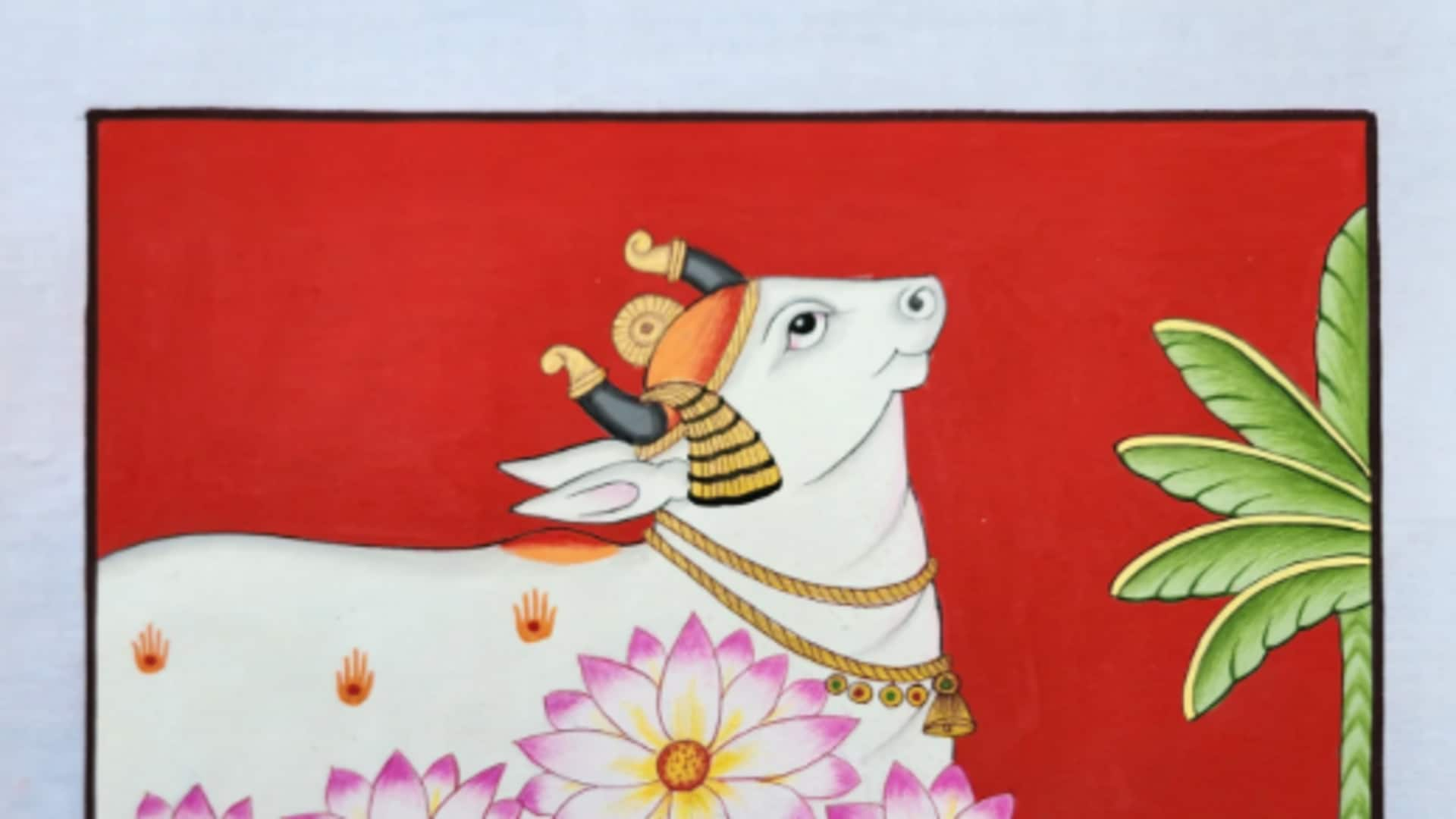
Discovering the beauty of Pichwai art
What's the story
Pichwai art is a traditional Indian art form that dates back to over four centuries in Nathdwara, Rajasthan.
Famous for its intricate detailing and vibrant colors, Pichwai paintings often illustrate tales from mythology, especially those related to Lord Krishna.
These are made on cloth using natural colors and are known for their elaborate designs and themes.
The art has been passed down through generations, preserving its cultural significance and artistic value.
Origins
Historical roots of Pichwai art
Pichwai art dates back to the 17th century when it was created as a backdrop for temple deities.
The term Pichwai itself translates to "that which hangs at the back."
These paintings were first employed to decorate temples during festivities and special occasions. Gradually, they transformed into a specific style of painting that illustrated all facets of life around the deity, including flora, fauna, and humans.
Methods
Techniques used in Pichwai painting
The making of a Pichwai painting requires precise techniques honed over centuries.
Artists employ natural pigments sourced from minerals and plants to create vivid colors.
The process starts with sketching the design on cloth and filling in colors, layer by layer.
Gold leaf is frequently used to add embellishments, further enriching the artwork.
This painstaking process may take weeks or even months.
Subjects
Themes depicted in Pichwai art
While Pichwai paintings mainly depict scenes from a revered figure's life, they also include other mythological tales and seasonal themes.
Common subjects include this figure playing with friends, dancing beneath trees, or surrounded by animals—signifying a pastoral role.
Seasonal changes are shown through elements such as blooming lotuses or monsoon clouds, depicting the cycle of nature.
Contemporary appeal
Modern relevance of Pichwai art
Despite being an ancient art form, Pichwai continues to captivate modern audiences with its timeless beauty and cultural depth.
Today, these artworks are not only found in homes but also adorn homes as decorative pieces worldwide.
Contemporary artists have adapted traditional styles while experimenting with new themes and mediums such as canvas or paper instead of cloth—making sure this heritage stays relevant in today's artistic landscape.
Preservation
Tips for preserving traditional art forms
To preserve traditional arts like Pichwai for future generations requires concerted efforts from both artists and patrons alike.
Supporting local artisans financially helps sustain their craft. Educating younger generations about these traditions fosters appreciation.
Creating platforms where artists can showcase their work encourages innovation within tradition without losing authenticity.
All contribute towards keeping such valuable cultural legacies alive amidst changing times.